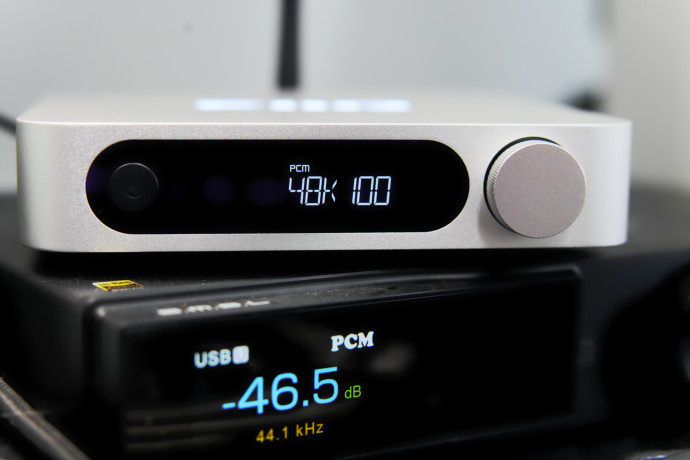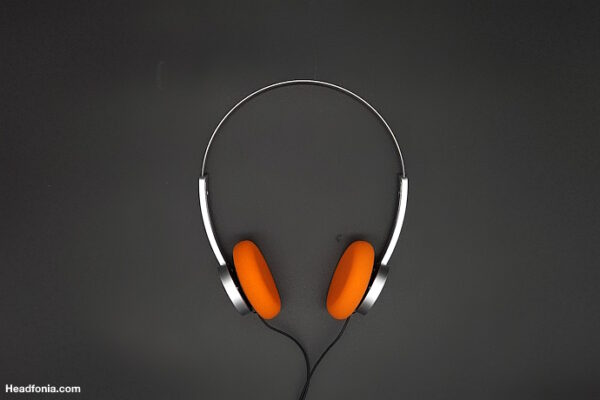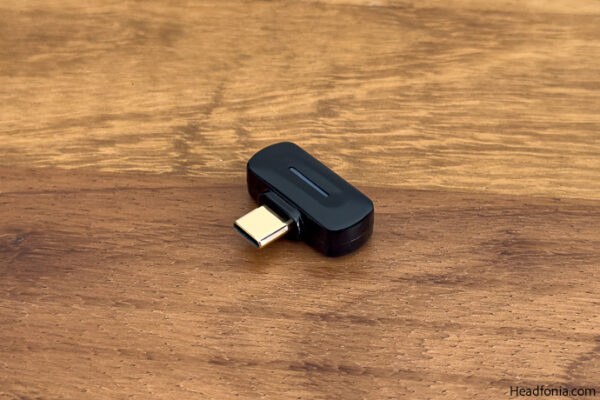Today we review the FiiO SR11, the all new streamer of the brand, designed to be paired with the K11, and selling for $99 USD
Disclaimer: the FiiO SR11 was sent to us free of charge by the brand, in exchange for our honest opinion.
About FiiO
Established in 2007, FiiO has become a powerhouse in the audiophile realm, thanks to their impressive line-up of affordable but, high-quality products. From IEMs, headphone amps, DACs, to DAPs, FiiO has consistently delivered top-notch devices, setting benchmarks for other brands to follow like the FiiO M17, the mighty FiiO Q7 or the everlasting E10K, which has remained on the market for over a decade.
An unceasing saga of success, propelled not only by a steady flow of smart, budget-friendly products, but also by the introduction of high-end devices. Their latest series of DAC/Amps and headphones being a prime example, the FiiO K19 aiming at a seasoned audiophiles, more than new-comers. An expansive range that includes the mighty R9 – a formidable streamer – or the mighty R7 both offering a full-fledged solution covering almost of of audiophiles demand.
And, if that line-up already seemed pretty complete, the brand decided to push even further, with a follow-up to their BTA series: the FiiO SR11. A digital streamer – no DAC inside – sharing the same design found on the FiiO K11, with AirPlay/Roon/DNLA support, priced just under the $100 threshold.
A new must-have? Time to find out

The FiiO SRxx / Rxx series
If FiiO’s range of DAP is quite extensive nowadays, their collection of Digital and analog streamers remains a little narrower, with just three products – including the SR11. Up to down you have:
– The FiiO R9: a TOTL all-in-one digital media streamer packing all of the brand’s bells and whistles, dual ES9038Pro DAC, THX-AAA amps, a massive touchscreen, bazillons of outputs/inputs, at a fraction of what Aurender or Rose would charge us
– The FiiO R7: a tone-down version of the R9, packing slightly less high-end features and I/O – albeit greats chips too – but enough power and versatility to satisfy most audiophiles, and at a more affordable price
– The FiiO SR11: the latest addition to the lineup, designed as a compact and budget-friendly streamer with essential features like AirPlay, Roon, and DLNA support, offering excellent value for those seeking high-quality streaming without breaking the bank
Design & Build Quality
Casing
Same player, shoot again.
For the FiiO SR11, the brand didn’t think too far and simply took the K11 box, switched the 6.35mm output for a power button, ditched the 3.5mm and kept everything else. A good choice in my opinion, seeing how popular the FiiO K11 has become, plus the fact that you can easily pile up the SR11 over the K11 to create your own, affordable, all-in-one desktop station.
You get the usual, neat CNC’ed, anodized silver aluminum case, with the same mini-mac-mini design for a minimal footprint, superb tempered glass upfront, and and illuminated FiiO logo on top that will help you identify what’s happening with your SR11 on a single glance.

As usual with the brand, build quality is flawless, with no gaps and premium materials everywhere your eye can see, and your hand can touch – my favorite feature being the rugged potentiometer next to the screen, which behaves surprisingly better than my SMSL DO400, sold for four time the price of my FiiO.
Size-wise, the FiiO SR11 is strictly identical to the previous K11 too with not exactly square dimensions (157 x 133 x 32,3mm) and just 375g on the scale. Dimensions that should allow you to fit the streamer on every work desk, or inside your audio shelf without any hassle. The cherry on top? The SR11 even comes with a silicone padded base, for anti-slip purpose!
Top that with a surprisingly crisp screen, outlining the seamless design that FiiO pushed over the last years, and, for the price, you’d be hard pressed to find anything as good.
Layout
On first look, the FiiO SR11 layout seemed awfully close to the K11, but on a closer look there are, indeed, some variations due to the inner conception of a digital streamer. Let me remind you that, in opposite to a classic streamer that deliver analog signals, a digital streamer like the SR11 only act as a bridge toward your DAC; meaning that you’ll only get digital outputs here.

So from left to right you have:
– an USB-C port, designed to power up the device
– a second USB-C port, this time dedicated to be linked to your DAC
– another USB port, but type-A this time, in case you’d prefer to use the now antique connection
– a Wi-Fi antenna (non removable)
– a Toslink/optical output, that should allow you to connect all and every DAC that doesn’t support USB
– a Coaxial output (Cinch) serving the same purpose
– finally a Gigabit RJ45 port, in case you’d prefer to use wires instead of your Wi-Fi – for reliability and speed
A very nice layout all-in-all, that should allow you to pair the FiiO SR11 with all and every DAC on the market
Screen
No difference here, the screen remains the same as the one found on the K11
I won’t complain though, if relatively small, this custom LCD display remained perfectly readable whatever the time of day. Relying on a basic LCD instead of a complex one was certainly a cost decision, but over the course of my review, I think I even preferred this to the one you could find on my old Aurender streamer – especially in terms of responsiveness.

Bundle
Inside the box
Like the M23 we previously reviewed, the FiiO SR11 bundle is quite dire as you can see with the picture – but for $99 that was to be expected!
In the box you get: the FiiO SR11, a USB-C to USB-C cable, a power adapter (10W), a remote!, some documentation.
So yeah, FiiO wasn’t very generous with this one, but the remote alone completely saves the device. And, to my surprise, this one isn’t even rated on their website, but I’d be curious to see if the FiiO RB3 could work with anything else than FiiO’s streamers like the R7, R9 or SR11

UI & Usage
Overall navigation
The FiiO SR11 setup was straightforward:
– plug it to an USB source delivering at least 10W of power
– either connect it to your local network via the LAN port, or wireless connection (just read the orange notice embedded in the box and you’ll be fine)
– connect your DAC to the streamer (for the USB port, the device works on a first connected, first served priority)
– choose either AirPlay, Roon or Mix with the control Knob
– launch your music from your computer/smartphone/tablet or anything that has access to your network
– and you’re good to go!
I connected mine to the SMSL DO400 through with the coaxial output, and it worked like a charm in AirPlay.

Streaming / DNLA / FiiO Link / Roon
As of now, the FiiO SR11 only supports AirPlay and Roon, which means that you either need an Apple device to stream your music, or a costly Roon subscription. Something a bit strange when you think that’s a sub-$100 device needing overly expensive sources to be correctly used!
Features that will be completed by many others through various software update over the next months – FiiO already announcing, Bluetooth reception, local playback and FiiO Link for the next one.
One last thing: the FiiO SR11 doesn’t seem to support AirPlay 2, as I was not able to pair if with other devices for multi-room, so let’s hope FiiO will update that too!
Specifications
For the nit-pickers and nerdy ones here, I’m giving the specs and technical sheets. For all the others, you can just go to the next page to see how the SR11 performs.
CPU
At the heart of the FiiO SR11, you get the now famous Ingenic X2000, a comprehensive SoC designed as a multi-app multi-processor including 2 XBurst2 CPU (a MIPS based Ingenic CPU core, which can be configured to work as two logic CPUs) and an XBurst0 (another Ingenic CPU core, MIPS based).
A powerhorse combining the computing capacity of application processors with the realtime control ability and outstanding power efficiency of MCUs and cross-over application domains – something particularly useful on a digital streamer.
Add to that an ultra-low power consumption, controlled RF emission, and you have the perfect brain for a competitive streamer.

WiFi/Ethernet
For wireless connectivity, the FiiO SR11 embeds an Ampak AP6256. Another full-featured SoC, with Wi-Fi and Bluetooth functionalities capable of seamless roaming for 802.11 a/b/g/n/ac 1×1 network over 2.4GHz and 5Ghz bands.
A chip becoming more and more common on entry/mid level smartphones nowadays, thanks to its versatility and overall performances. Bluetooth isn’t activated yet on the FiiO, but it’s nice to know that FiiO kept some options there
Last but not least, or the LAN connection, the SR11 embarks an YT8531C from Motorcomm. A good chip available on many laptops nowadays, that surpasses the usual 100Mbps limit commonly found on similar devices, allowing access to Gigabit speeds – ideal for streaming very high-definition music files from services like Qobuz, Apple Music, or Roon.
Support sampling rates
As usual, depending of the port and source you’ll use, the FiiO SR11 might be limited in term of sampling rates available.
For Roon you get:
– up to 768kHz/32bit and DSD256 through the USB ports
– up to 192kHz/24bit and DSD64 through the Coaxial and Toslink ports
– full MQA whatever the output
Via AirPlay, all PCM/DSD/MQA will be down sampled to 44,1kHz-16bit though, so let’s hope AirPlay 2 comes one day!

Full specs
You can find FiiO’s comprehensive specifications over here:
- Model: FiiO SR11
- Type: Digital Audio Streamer
- CPU: Ingenic X2000
- RAM: 128mb LPDDR2
- WiFi module: AP6256
- Power supply: G2257Q51U
- Ethernet: YT8531C
- Sample rate (Roon) : PCM : 8Hz – 384Hz (8/16/24/32bits) native – DSD64/128/256
- Digital output distortion: 0.000006%(0dB 1kHz 192k 24bit)
- Outputs: Coaxial, Toslink, USB-C, USB-A
- Input: USB-C (power only)
- Screen: 3” LCD screen
- WiFi: 2.4 GHz / 5 GHz support
- Ethernet: up to 1000MBps
- Bluetooth support: TBA
- Size : 157x133x32.3mm
- Weight: 375g
- Price: $99 USD
Time to turn on the player now!
The article continues on Page two, after the click here, or after the jump
Page 1: About the brand, design and build quality
Page 2: Sound performance, associations










Jim
When you compared the Fiio to the higher end streamers, were you using Roon or Airplay? Spotify or lossless? I ask because Airplay and Spotify are not bit perfect and that could account for the difference in sound quality, whereas, if my theory holds, using Roon with bit perfect lossless audio would sound the same between the Fiio and your higher end streamers. Curious to find out?